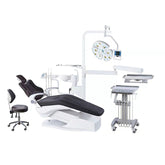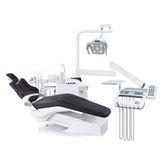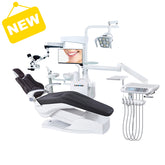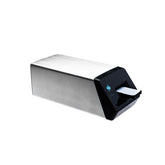Dental Digital Imaging Plate Scanner
The Dental Digital Imaging Plate Scanner uses flexible phosphor plates to capture and convert X-ray images into high-resolution digital format. Ideal for dental practices, this system offers a fast, efficient, and cost-effective imaging solution. The scanner provides rapid image acquisition, converting latent images into digital images in seconds. Its high-resolution imaging ensures clear, detailed diagnostics, allowing for the detection of conditions like cavities and bone loss.
With compatibility for various plate sizes (from pediatric to adult), the scanner caters to different imaging needs, such as bitewings, periapical, and panoramic views. The user-friendly design, often featuring touchscreen interfaces, ensures simple operation. Additionally, the system includes image enhancement software for optimal viewing and diagnostics. It also offers low radiation exposure compared to traditional film-based systems, ensuring patient safety.
Eco-friendly and cost-effective, the scanner eliminates the need for film, chemicals, and frequent plate replacements, making it a sustainable investment that reduces long-term costs while improving the quality of care.
- 10
- 15
- 20
- 25
- 30
- 50
- Рекомендуется
- Лидер продаж
- От А до Я
- От Я до А
- По возрастанию цены
- По убыванию цены
- Сначала старые
- Сначала новые
Sort by:
- Рекомендуется
- Лидер продаж
- От А до Я
- От Я до А
- По возрастанию цены
- По убыванию цены
- Сначала старые
- Сначала новые
-
Vendor:Lavender Dentals
Digital Imaging Plate Scanner L-A HDS-500
- $828.50
$1,000.00- $828.50
- Unit price
- / per
















